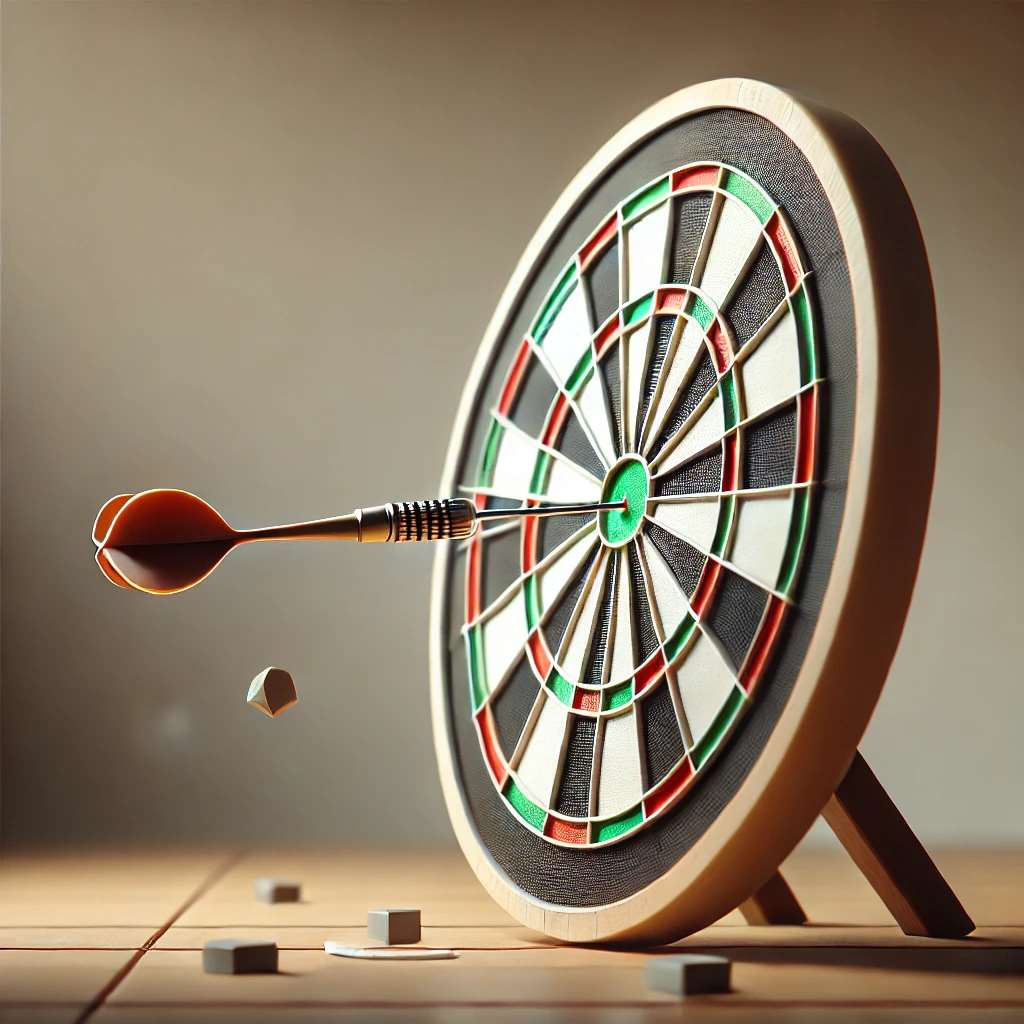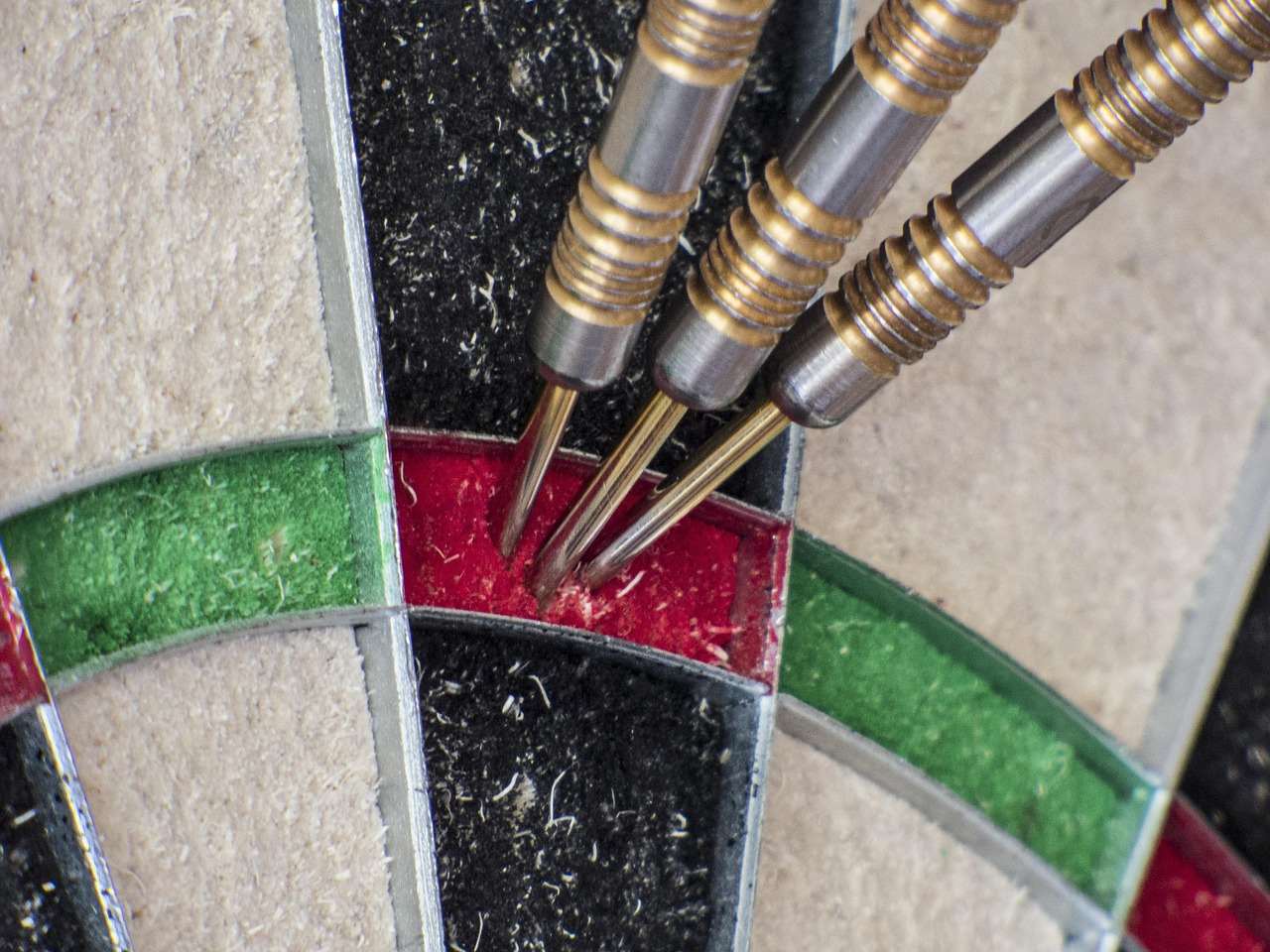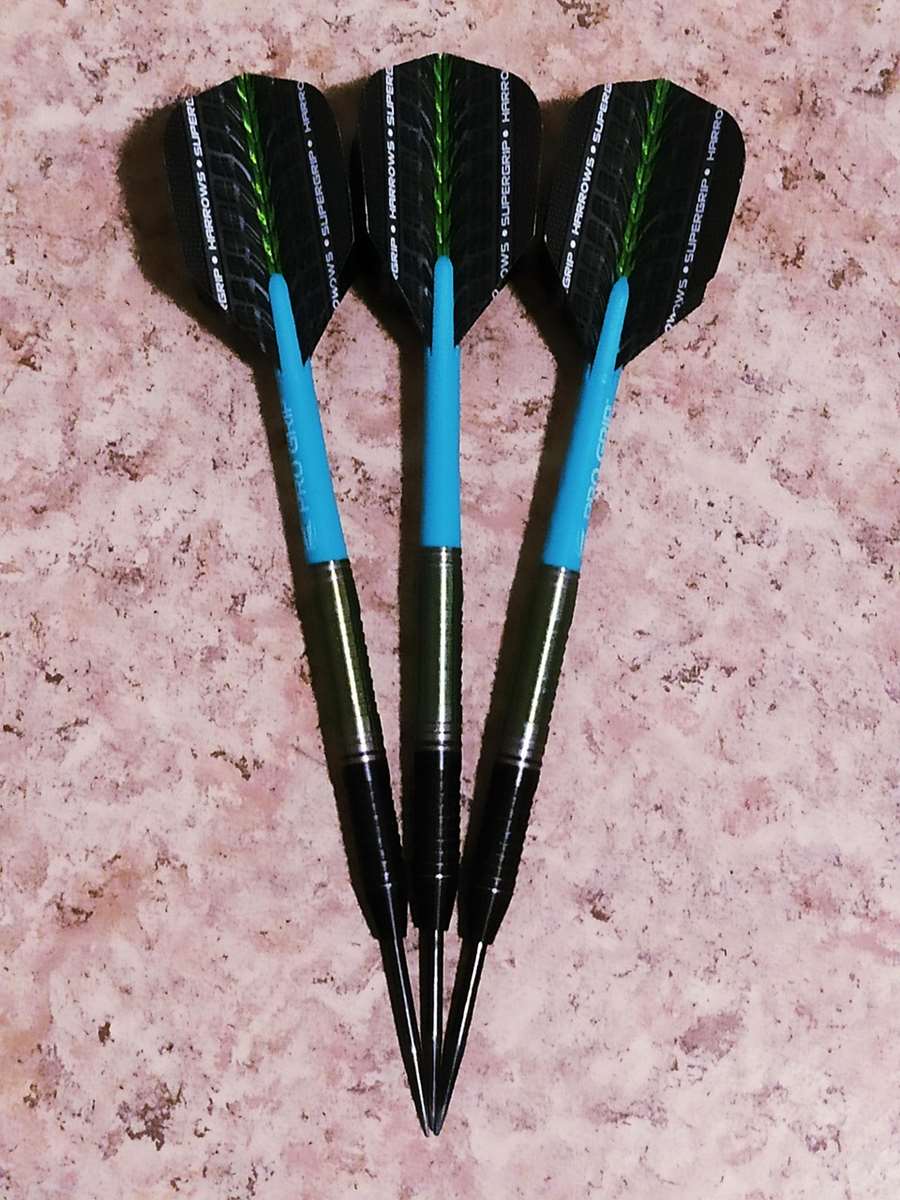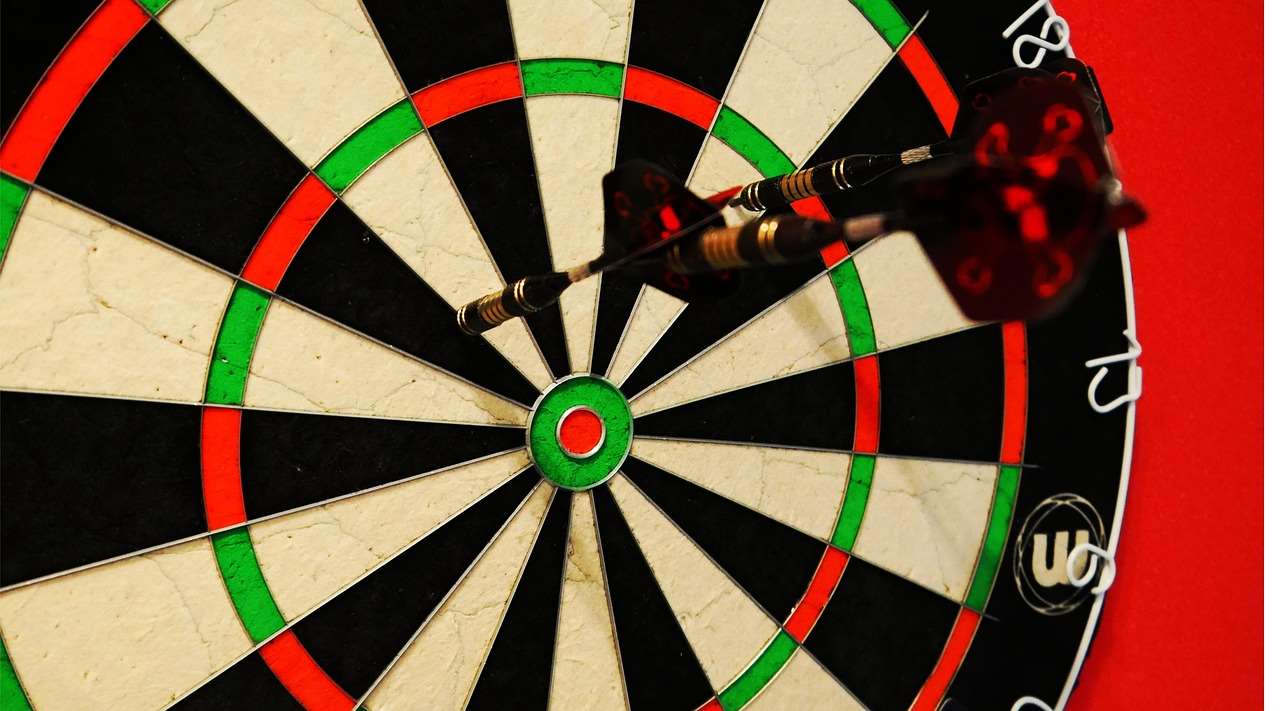Mastering darts how to hit the bullseye boils down to consistent stance, grip, and release; aiming precisely and practicing regularly are key. This article will guide you through the fundamentals of perfecting your technique and provide proven strategies to dramatically improve your accuracy at hitting that coveted bullseye, covering everything from equipment to mental preparation.
⚠️ Still Using Pen & Paper (or a Chalkboard)?! ⚠️
Step into the future! The Dart Counter App handles all the scoring, suggests checkouts, and tracks your stats automatically. It's easier than you think!
Try the Smart Dart Counter App FREE!Ready for an upgrade? Click above!
Perfecting Your Stance: The Foundation for Darts How To Hit The Bullseye
Your stance in darts is the bedrock upon which your entire throw is built. A stable and balanced stance allows for consistent body positioning and minimizes unnecessary movement, crucial for darts how to hit the bullseye. Experiment to find what works best for you, but here are two common stances to consider:
- The Front-On Stance: In this stance, you stand directly facing the dartboard. Your throwing shoulder should be aligned with the bullseye. This stance is generally considered more stable.
- The Angled Stance: This involves standing at an angle to the board, usually around 45 degrees. This can provide a clearer view of the target and may feel more natural for some players.
Regardless of the stance you choose, remember these key points:
- Foot Placement: Place your front foot (the foot on the same side as your throwing arm) close to the oche (the throwing line). Your back foot should be positioned for balance, either directly behind or slightly to the side.
- Weight Distribution: Distribute your weight evenly between both feet. Avoid leaning too far forward or backward.
- Consistency: Once you’ve found a stance that feels comfortable and stable, stick with it. Changing your stance frequently will make it difficult to develop consistent throws.

Grip and Release: The Key to Darts Accuracy
The way you grip your dart and release it significantly impacts its trajectory. There’s no single “right” grip, but understanding the principles can help you find one that suits your style.
Finding Your Ideal Dart Grip
Experiment with different grip styles. Common grips include:
- The Two-Finger Grip: Holding the dart between your thumb and index finger.
- The Three-Finger Grip: Adding a middle finger for extra control.
- The Four-Finger Grip: Using all four fingers to grip the dart.
Key considerations for your grip:
- Pressure: Grip the dart firmly enough to maintain control, but not so tightly that it causes tension. A relaxed grip allows for a smoother release.
- Placement: Find the balance point of the dart and grip it slightly forward of this point. This will help prevent the dart from wobbling in flight.
- Consistency: As with your stance, consistency is key. Grip the dart the same way every time.
Mastering the Release
A smooth and consistent release is crucial for darts how to hit the bullseye. Here’s what to focus on:
- Follow Through: Extend your arm fully towards the target, even after the dart has left your hand. A proper follow-through ensures the dart is released in the intended direction.
- Smooth Motion: Avoid jerky or abrupt movements. Strive for a fluid, pendulum-like motion with your arm.
- Wrist Action: Some players use a slight wrist flick to impart additional power or spin to the dart. Experiment to see if this works for you, but avoid excessive wrist movement, as it can lead to inconsistency.
Practice your grip and release regularly. Focus on developing a feel for the dart and a smooth, repeatable motion. Remember to utilize darts flight protectors how to use in order to keep your darts as consistent as possible.
Aiming Strategies: Darts How To Hit The Bullseye
Even with a perfect stance, grip, and release, accurate aiming is essential for darts how to hit the bullseye. Here are some tips to improve your aiming skills and improve your scoring average.
- Visualize the Target: Before you throw, visualize the dart hitting the bullseye. This mental rehearsal can help improve your focus and accuracy.
- Focus Your Eyes: Keep your eyes fixed on the target throughout your throw. Avoid looking at your hand or the dart.
- Use a Reference Point: Some players find it helpful to use a reference point on the board, such as the wire surrounding the bullseye, to help align their throw.
- Adjust for Drift: As you play, you may notice that your darts tend to drift slightly to the left or right. Make small adjustments to your aim to compensate for this drift.

The Mental Game: Staying Focused Under Pressure
Darts is as much a mental game as it is a physical one. The ability to stay focused and composed under pressure can be the difference between winning and losing. You will only hit darts how to hit the bullseye if you can stay calm.
- Develop a Pre-Throw Routine: A consistent pre-throw routine can help you focus and prepare for each throw. This might involve taking a deep breath, visualizing the target, or repeating a mantra.
- Manage Your Emotions: It’s normal to feel frustrated or disappointed when you miss, but dwelling on mistakes can negatively impact your performance. Learn to let go of bad throws and focus on the next one.
- Stay Positive: Maintain a positive attitude, even when you’re struggling. Believing in yourself can boost your confidence and improve your performance.
- Practice Under Pressure: Simulate game-like conditions during your practice sessions to prepare yourself for the pressure of competition. Practice darts app with scoring can help you to stay positive and on track.
Equipment: Choosing the Right Darts
The type of darts you use can also affect your accuracy. Factors such as weight, barrel shape, and grip texture all influence how the dart feels in your hand and flies through the air. Consider these points when choosing your darts.
- Weight: Darts typically range in weight from 16 to 30 grams. Lighter darts are generally easier to throw, while heavier darts may be more stable in flight. Experiment to find a weight that feels comfortable and controllable.
- Barrel Shape: Dart barrels come in a variety of shapes, including straight, torpedo, and bomb. The shape of the barrel affects the dart’s balance and grip. Straight barrels are generally considered more versatile, while torpedo and bomb-shaped barrels may be preferred by players who prefer a specific grip style.
- Grip Texture: The grip texture on the dart barrel can also impact your control. Some darts have smooth barrels, while others have knurled or ringed grips. Choose a grip texture that provides adequate traction without feeling too abrasive.
- Flights and Shafts: Flights and shafts also come in various materials and lengths. Shorter shafts and smaller flights are useful when stacking the darts closely together to improve your scoring average.

Practice Drills for Darts How To Hit The Bullseye
Consistent practice is the most effective way to improve your dart-throwing skills and improve your chances of darts how to hit the bullseye. Here are a few drills you can use to hone your accuracy:
- The Bullseye Drill: Focus solely on hitting the bullseye. Throw a set number of darts (e.g., 20) and track your score. Try to increase your score each time you practice.
- The 20s Drill: Focus on hitting the triple 20. This is a high-scoring area and is critical to master.
- The Around the World Drill: Start at number 1 and work your way around the board, hitting each number in sequence. This drill helps improve your accuracy on all areas of the board.
- The Checkout Drill: Practice common checkout combinations, such as 40 (double 20), 32 (double 16), and 16 (double 8). This will help you improve your finishing skills. You could even try to practice the 170 darts checkout name
Common Mistakes to Avoid
Even experienced dart players make mistakes. Here are some common pitfalls to avoid:
- Inconsistent Stance: Changing your stance frequently can disrupt your balance and throw.
- Tense Grip: Gripping the dart too tightly can cause tension and affect your release.
- Rushing Your Throw: Take your time and focus on each throw. Rushing can lead to errors.
- Ignoring Your Follow Through: A poor follow-through can cause the dart to veer off course.
- Failing to Adjust: Don’t be afraid to make small adjustments to your aim or technique if you’re struggling.

Dartboard Maintenance: Keeping Your Board in Top Condition
Proper dartboard maintenance is essential for preserving its quality and lifespan. Regularly rotating your dartboard prevents excessive wear in frequently targeted areas, extending its usability. When you maintain your dartboard well, you will be able to more efficiently hit darts how to hit the bullseye.
- Rotate Regularly: Rotate your dartboard regularly to distribute wear evenly.
- Remove Darts Carefully: Avoid twisting or pulling darts out of the board. Use a dart puller if necessary.
- Keep it Clean: Brush the board with a soft brush to remove loose fibers and dust.
- Avoid Moisture: Keep your dartboard away from moisture, as this can damage the sisal fibers.
Advanced Techniques and Strategies
Once you’ve mastered the fundamentals, you can start exploring more advanced techniques and strategies to elevate your game even further.
- Understanding Grouping: Grouping refers to the tendency of your darts to land in a cluster, even if they’re not hitting the target you intended. Analyzing your grouping patterns can help you identify flaws in your technique and make targeted adjustments.
- Strategic Checkouts: Mastering a variety of checkout combinations is essential for competitive play. Learn which checkouts are most efficient and when to use them.
- Opponent Analysis: Observing your opponent’s strengths and weaknesses can give you a competitive edge. Pay attention to their preferred targets, their tendencies under pressure, and any patterns in their play.

Conclusion: Continue Your Journey to the Bullseye
Darts how to hit the bullseye requires dedication, practice, and a strategic approach. By focusing on your stance, grip, release, aiming, and mental game, you can significantly improve your accuracy and consistency. Remember to choose the right equipment, practice regularly, and learn from your mistakes. Whether you’re a casual player or a serious competitor, the journey to mastering darts is a rewarding one. So pick up your darts, aim for the bullseye, and enjoy the game! To continue improving, consider trying a practice darts app with scoring.
Hi, I’m Dieter, and I created Dartcounter (Dartcounterapp.com). My motivation wasn’t being a darts expert – quite the opposite! When I first started playing, I loved the game but found keeping accurate scores and tracking stats difficult and distracting.
I figured I couldn’t be the only one struggling with this. So, I decided to build a solution: an easy-to-use application that everyone, no matter their experience level, could use to manage scoring effortlessly.
My goal for Dartcounter was simple: let the app handle the numbers – the scoring, the averages, the stats, even checkout suggestions – so players could focus purely on their throw and enjoying the game. It began as a way to solve my own beginner’s problem, and I’m thrilled it has grown into a helpful tool for the wider darts community.